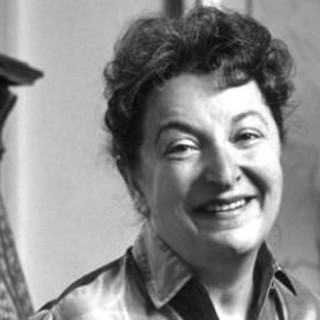
01.02.1969
127
Movie
Tekst piosenki
We generally become interested in movies because we enjoy them and what we enjoy them for has little to do with what we think of as art. The movies we respond to, even in childhood, don’t have the same values as the official culture supported at school and in the middle-class home. At the movies we get low life and high life, while David Susskind and the moralistic reviewers chastise us for not patronizing what they think we should, “realistic” movies that would be good for us—like “A Raisin in the Sun,” where we could learn the lesson that a Negro family can be as dreary as a white family. Movie audiences will take a lot of garbage, but it’s pretty hard to make us queue up for pedagogy. At the movies we want a different kind of truth, something that surprises us and registers with us as funny or accurate or maybe amazing, maybe even amazingly beautiful. We get little things even in mediocre and terrible movies—José Ferrer sipping his booze through a straw in “Enter Laughing,” Scott Wilson’s hard scary all-American-boy-you-can’t-reach face cutting through the pretensions of “In Cold Blood” with all its fancy bleak cinematography. We got, and still have embedded in memory, Tony Randall’s surprising depth of feeling in “The Seven Faces of Dr. Lao,” Keenan Wynn and Moyna Macgill in the lunch-counter sequence of “The Clock,” John W. Bubbles on the dance floor in “Cabin in the Sky,” the inflection Gene Kelly gave to the line, “I’m a rising young man” in “DuBarry Was a Lady,” Tony Curtis saying “avidly” in “Sweet Smell of Success.” Though the director may have been responsible for releasing it, it’s the human material we react to most and remember longest. The art of the performers stays fresh for us, their beauty as beautiful as ever. There are so many kinds of things we get—the hangover sequence wittily designed for the CinemaScope screen in “The Tender Trap,” the atmosphere of the newspaper offices in “The Luck of Ginger Coffey,” the automat gone mad in “Easy Living.” Do we need to lie and shift things to false terms—like those who have to say Sophia Loren is a great actress as if her acting had made her a star? Wouldn’t we rather watch her than better actresses because she’s so incredibly charming and because she’s probably the greatest model the world has ever known? There are great moments—Angela Lansbury singing “Little Yellow Bird” in “Dorian Gray.” (I don’t think I’ve ever had a friend who didn’t also treasure that girl and that song.) And there are absurdly right little moments—in “Saratoga Trunk” when Curt Bois says to Ingrid Bergman, “You’re very beautiful,” and she says, “Yes, isn’t it lucky?” And those things have closer relationships to art than what the schoolteachers told us was true and beautiful. Not that the works we studied in school weren’t often great (as we discovered later) but that what the teachers told us to admire them for (and if current texts are any indication, are still telling students to admire them for) was generally so false and prettified and moralistic that what might have been moments of pleasure in them, and what might have been cleansing in them, and subversive, too, had been coated over.
Because of the photographic nature of the medium and the cheap admission prices, movies took their impetus not from the desiccated imitation European high culture, but from the peep show, the Wild West show, the music hall, the comic strip—from what was coarse and common. The early Chaplin two-reelers still look surprisingly lewd, with bathroom jokes and drunkenness and hatred of work and proprieties. And the Western shoot-’em-ups certainly weren’t the schoolteachers’ notions of art—which in my school days, ran more to didactic poetry and “perfectly proportioned” statues and which over the years have progressed through nice stories to “good taste” and “excellence”—which may be more poisonous than homilies and dainty figurines because then you had a clearer idea of what you were up against and it was easier to fight. And this, of course, is what we were running away from when we went to the movies. All week we longed for Saturday afternoon and sanctuary—the anonymity and impersonality of sitting in a theatre, just enjoying ourselves, not having to be responsible, not having to be “good.” Maybe you just want to look at people on the screen and know they’re not looking back at you, that they’re not going to turn on you and criticize you.
Perhaps the single most intense pleasure of moviegoing is this non-aesthetic one of escaping from the responsibilities of having the proper responses required of us in our official (school) culture. And yet this is probably the best and most common basis for developing an aesthetic sense because responsibility to pay attention and to appreciate is anti-art, it makes us too anxious for pleasure, too bored for response. Far from supervision and official culture, in the darkness at the movies where nothing is asked of us and we are left alone, the liberation from duty and constraint allows us to develop our own aesthetic responses. Unsupervised enjoyment is probably not the only kind there is but it may feel like the only kind. Irresponsibility is part of the pleasure of all art; it is the part the schools cannot recognize. I don’t like to buy “hard tickets” for a “road show” movie because I hate treating a movie as an occasion. I don’t want to be pinned down days in advance; I enjoy the casualness of moviegoing—of going in when I feel like it, when I’m in the mood for a movie. It’s the feeling of freedom from respectability we have always enjoyed at the movies that is carried to an extreme by American International Pictures and the Clint Eastwood Italian Westerns; they are stripped of cultural values. We may want more from movies than this negative virtue but we know the feeling from childhood moviegoing when we loved the gamblers and pimps and the cons’ suggestions of muttered obscenities as the guards walked by. The appeal of movies was in the details of crime and high living and wicked cities and in the language of toughs and urchins; it was in the dirty smile of the city girl who lured the hero away from Janet Gaynor. What draws us to movies in the first place, the opening into other, forbidden or surprising, kinds of experience, and the vitality and corruption and irreverence of that experience are so direct and immediate and have so little connection with what we have been taught is art that many people feel more secure, feel that their tastes are becoming more cultivated when they begin to appreciate foreign films. One foundation executive told me that he was quite upset that his teen-agers had chosen to go to “Bonnie and Clyde” rather than with him to “Closely Watched Trains.” He took it as a sign of lack of maturity. I think his kids made an honest choice, and not only because “Bonnie and Clyde” is the better movie, but because it is closer to us, it has some of the qualities of direct involvement that make us care about movies. But it’s understandable that it’s easier for us, as Americans, to see art in foreign films than in our own, because of how we, as Americans, think of art. Art is still what teachers and ladies and foundations believe in, it’s civilized and refined, cultivated and serious, cultural, beautiful, European, Oriental: it’s what America isn’t, and it’s especially what American movies are not. Still, if those kids had chosen “Wild in the Streets” over “Closely Watched Trains” I would think that was a sound and honest choice, too, even though “Wild in the Streets” is in most ways a terrible picture. It connects with their lives in an immediate even if a grossly frivolous way, and if we don’t go to movies for excitement, if, even as children, we accept the cultural standards of refined adults, if we have so little drive that we accept “good taste,” then we will probably never really begin to care about movies at all. We will become like those people who “may go to American movies sometimes to relax” but when they want “a little more” from a movie, are delighted by how colorful and artistic Franco Zeffirelli’s “The Taming of the Shrew” is, just as a couple of decades ago they were impressed by “The Red Shoes,” made by Powell and Pressburger, the Zeffirellis of their day. Or, if they like the cozy feeling of uplift to be had from mildly whimsical movies about timid people, there’s generally a “Hot Millions” or something musty and faintly boring from Eastern Europe—one of those movies set in World War II but so remote from our ways of thinking that it seems to be set in World War I. Afterward, the moviegoer can feel as decent and virtuous as if he’d spent an evening visiting a deaf old friend of the family. It’s a way of taking movies back into the approved culture of the schoolroom—into gentility—and the voices of schoolteachers and reviewers rise up to ask why America can’t make such movies.
Tłumaczenie
Brak
Polecani artyści
Najnowsze teksty piosenek
Sprawdź teksty piosenek i albumy dodane w ciągu ostatnich 7 dni


























